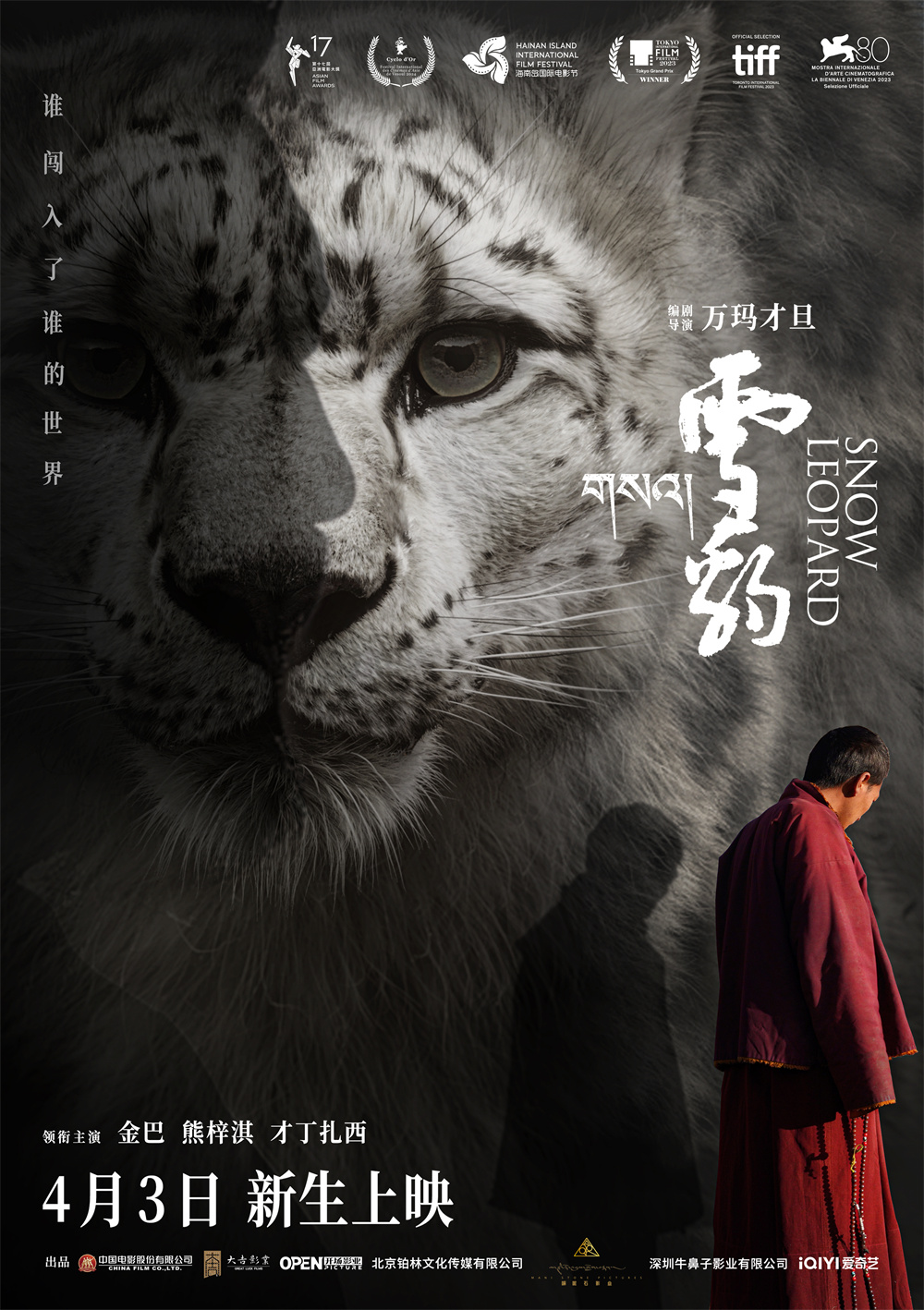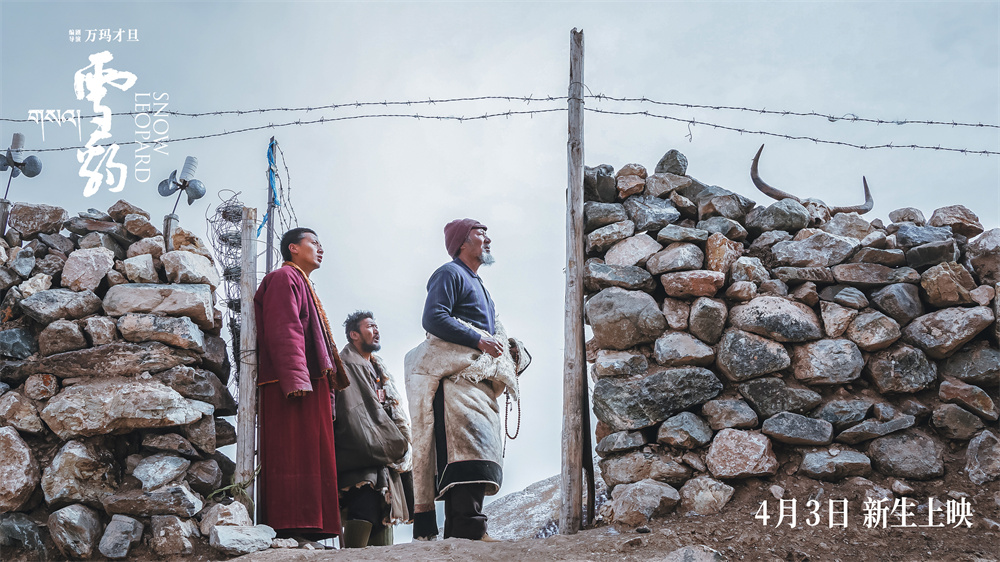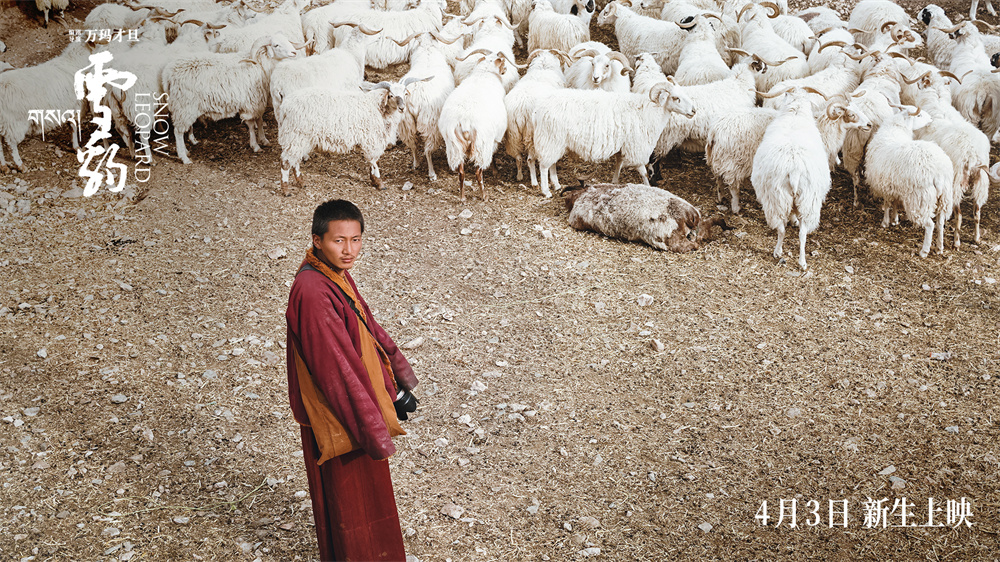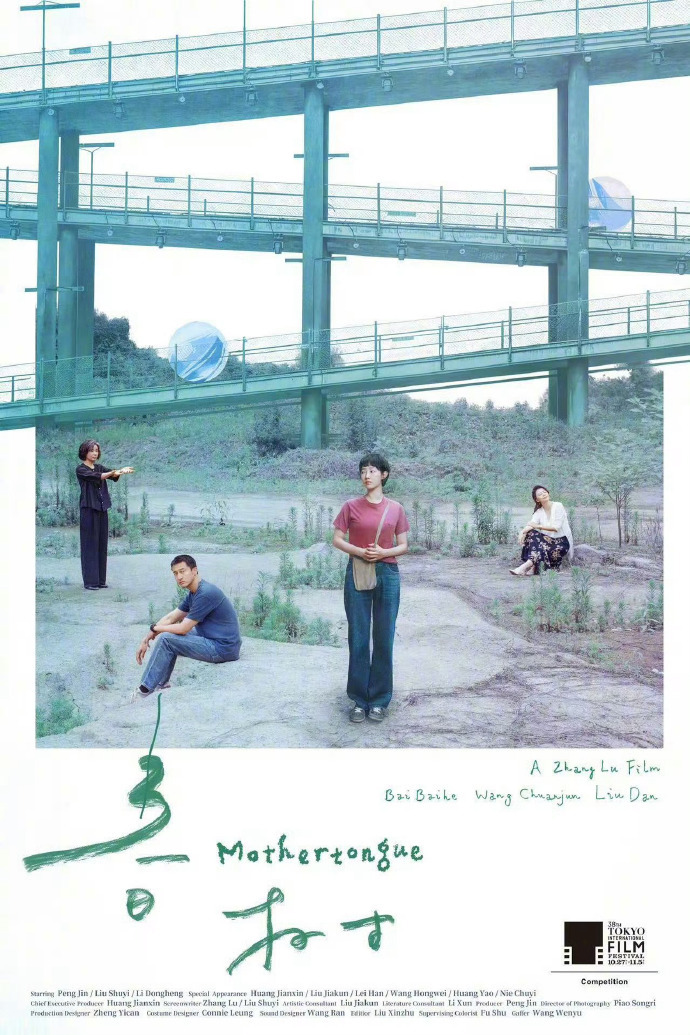
After "hitting and killing a sheep" with his car, Wanma Tseden let a snow leopard jump into the herdsman's sheep pen and "bitten nine sheep to death." With this as the background of the story, Wanma Tseden continued his insight into the Tibetan era and society, used living creatures to reflect the plight of mankind, and told a story about "killing" and "releasing life."
The sudden death of director Wanma Tseden shocked the film industry last spring. As my country's most famous Tibetan filmmaker, he was also a frequent visitor to major film festivals. As his legacy, "Snow Leopard" entered the Venice main competition and won the best film at this year's Tokyo International Film Festival. The film is released during the Qingming Festival, which is probably the best way to commemorate this film artist.

"Snow Leopard" poster
"Snow Leopard" is a movie that is still powerful but not quite so powerful. If you are familiar with his films, you will be able to see the elements and symbols he has integrated throughout them, as well as his consistent themes and thoughts. At the same time, comparing the previous works, we can also see that this director, like the movies he presents, has penetrated and integrated with more mainstream culture and life. He has also become more nice to the audience. The conflicts in the story are fierce and clear, and there is more intimacy. Considering the genre, CG special effects have even become the most important role in the film; in the selection of stories and characters, there is also a more open attitude and a more tolerant compassion.
By the ninth film, the Tibetan areas in Wanma Tseden's shots no longer need to be deliberately decorated. He has emphatically marked the conflict with the entry of foreign cultures and the various discomforts and absurdities caused by it. Nowadays, the life materials all over Tibetan areas, It has come to you at your fingertips, just like the vast sky, earth and mountains in the opening scene, the brainwashing Internet divine song "Bars in Lhasa" resounded in the closed car. The young Han photographer who rushed to the Tibetan home with his camera represents the perspective of most ordinary viewers, the perspective of an outsider who has nothing to do with the creatures, history, and culture of this land.

"Snow Leopard" poster
Various characters appeared around the incident where the snow leopard killed the sheep. Different people have different views and motivations on this. Each party has its own choice and insistence on whether to release the snow leopard trapped in the sheep pen. What seems to be a reasonable appeal has become the cause of intensifying conflicts among multiple parties. fuse.
The herdsman played by Kimba suffered heavy losses, "I would accept it if I only killed one or two." He knew that snow leopards are naturally carnivorous, but the snow leopard killed 9 of them and did not want to eat the meat. A provocation. He imprisoned the snow leopard in the sheepfold, hoping to use it as a bargaining chip to obtain compensation for his losses, or to get revenge that was just about his life.
But snow leopards mean something different to others. To the sheep, it is an aggressive alien species that accidentally broke in; to the public officials of the relevant departments, it is a national first-level protected animal for which someone should be held responsible if something goes wrong; to the Tibetan elderly, the snow leopard is It is a divine creature; in the eyes of the media, it is a news element that creates topics to attract attention; for lamas, it is spiritual sustenance and the embodiment of faith.
The snow leopard is no longer a simple animal, but a symbolic symbol. It is nature, religion, civilization, and power...

"Snow Leopard" stills
In this incident, the tensions between man and nature, secularity and religion, interests and power, individual and collective, modernity and tradition are all tense as the drama progresses.
Printed on the movie poster is the sentence "Who breaks into whose world", which is the key word for the interpretation of this film. To the sheep, the snow leopard is an "interloper"; to the traditional nomadic life, the civilization of the information age is an "interloper"; to the herdsmen's original way of resolving disputes, the television cameras and the intervention of relevant departments are "interlopers" "; For the lama's originally unchanging spiritual life, the new world opened by expensive cameras is an "intruder"; for the entire Tibetan area, Chinese culture silently infiltrates into the details of everyone's life, which is also an "intrusion."
The language of the camera has changed from the fixed and steady gaze in the past, and is more entered in the form of a handheld long lens, which is closer to a documentary look and feel, allowing the audience to focus more on the story happening here. Wanma Tseden is still the calm observer, silently watching the collision and changes in his hometown culture as it enters modern civilization behind the camera.

"Snow Leopard" stills
Whether it is the little lama who is deeply attracted by the TV show wearing a Sun Wukong mask in "The Silent Mani Stone", the last pure-blooded Tibetan Mastiff who cannot become a pet in "Old Dog", or the focus on culture in "Tarot" The little braid of conflict and individual anxiety, the red balloon in "Balloon" that symbolizes the conflict between female fertility, faith and freedom... Wanma Tseden can always find precise images and scenes to show his understanding of every current life. Observations of commonplace wonders. And this time, the breakthrough of this "snow leopard" is still full of the times——
From a physical perspective, this non-existent CG snow leopard brings Tibetan films to a new level in the industrialization process, and it also embodies the director's consistent thinking and attitude towards the medium. Some people joked that this was coming from the "Tibetan New Wave" to "Tibetan Hollywood." Why not? A bolder practice of embracing and integrating foreign cultures, just like "Killing a Sheep"'s attempt to incorporate road suspense into Tibetan film narratives, Wanma Tseden is always keen on making his Tibetan films go further. It's ambitious.
At the same time, Wanma Tseden used this snow leopard to give his true feelings about the environment of the times in which he lived. In the early stages of the "Hometown Trilogy", the fate of the characters became "tragic" due to the intensity of the collision, but the works in recent years have changed. Wanma Tseden himself once admitted in an interview, "Everyone has to find a balance in it. Some people have adapted, some people have become numb, some people have balanced, and some people have been 'eliminated'." The director himself may be more like the lama who picked up the camera. He was led by the "snow leopard" of the movie. He was born into the world and maintained his pure spiritual world.

"Snow Leopard" stills
Combined with the creation time of "Snow Leopard", the plot trend in the last third of the film may show the director's most real feelings and helplessness about the current world. In fact, he is still sharp, but when he raises his hand, the knife never falls.
The situation of animals is used as a symbol to refer to various dilemmas. "Snow Leopard" and "Old Dog" have many similarities, but comparing the endings, the fates of Snow Leopard and Old Dog are completely different.
Director Wanma Tseden wrote in the director's explanation, "This is a story about unparalleled compassion, care and love." When attending the film festival for his father, Wanma Tseden's son Jigme Chenglie also said, "My father It has reached another level of new understanding of life, the world or Tibetan culture.”
Thanks to director Wanma Tseden for leaving such a gift to the world. Behind the cold observation, the love and compassion for the world remain.


